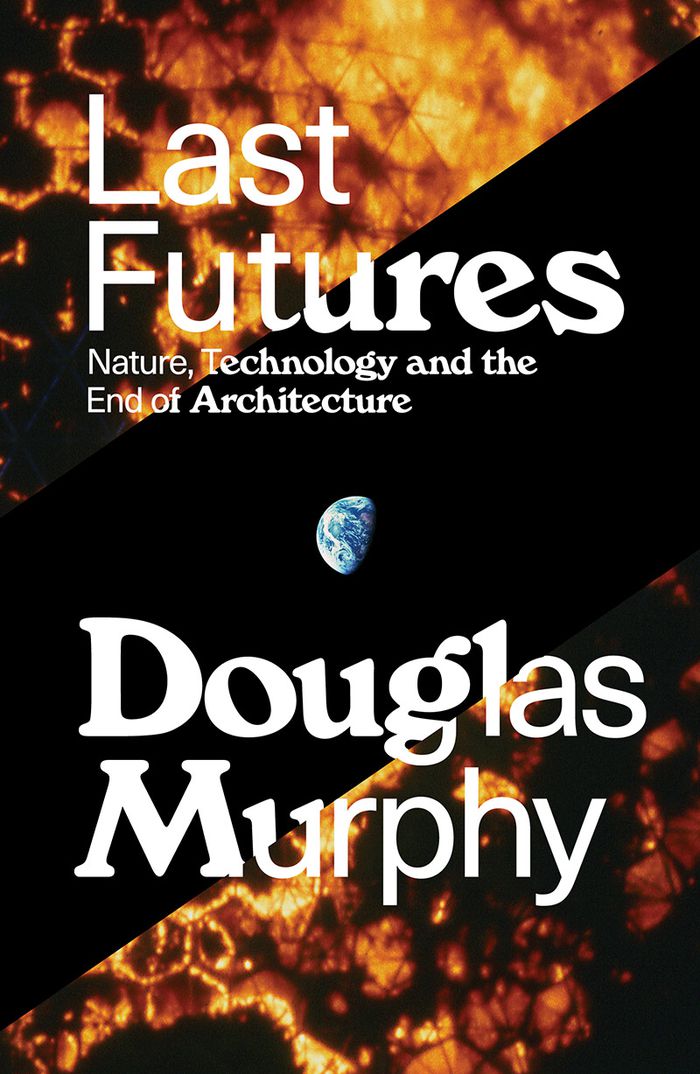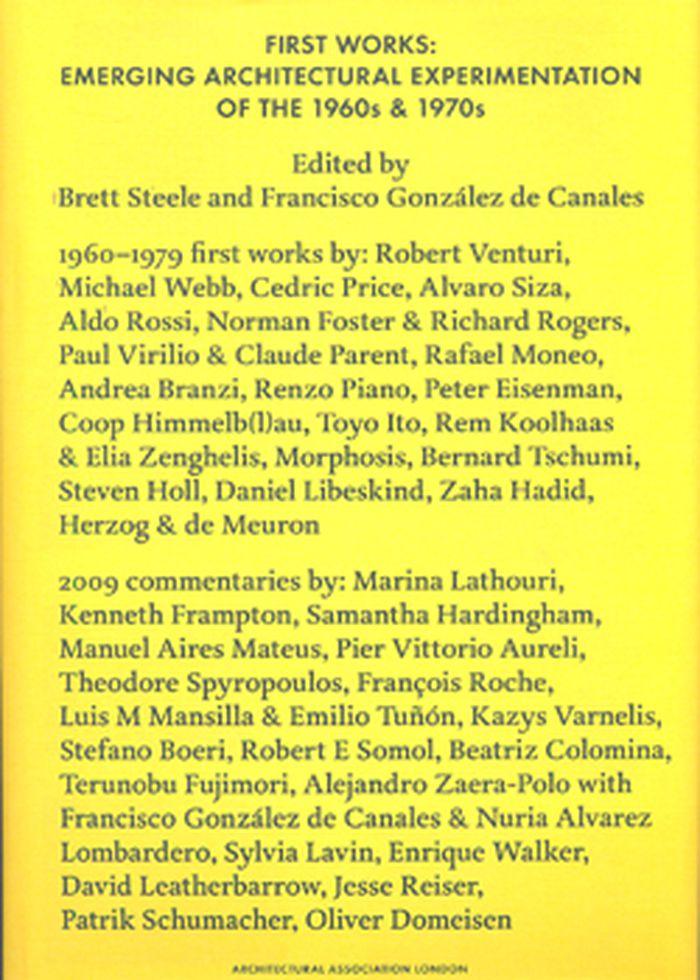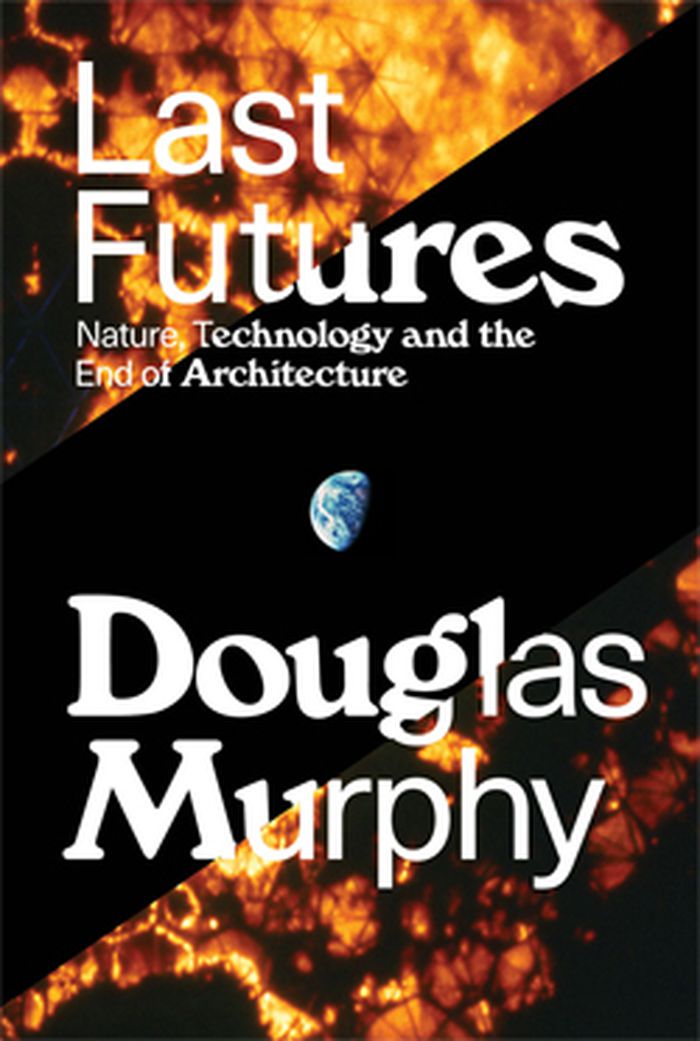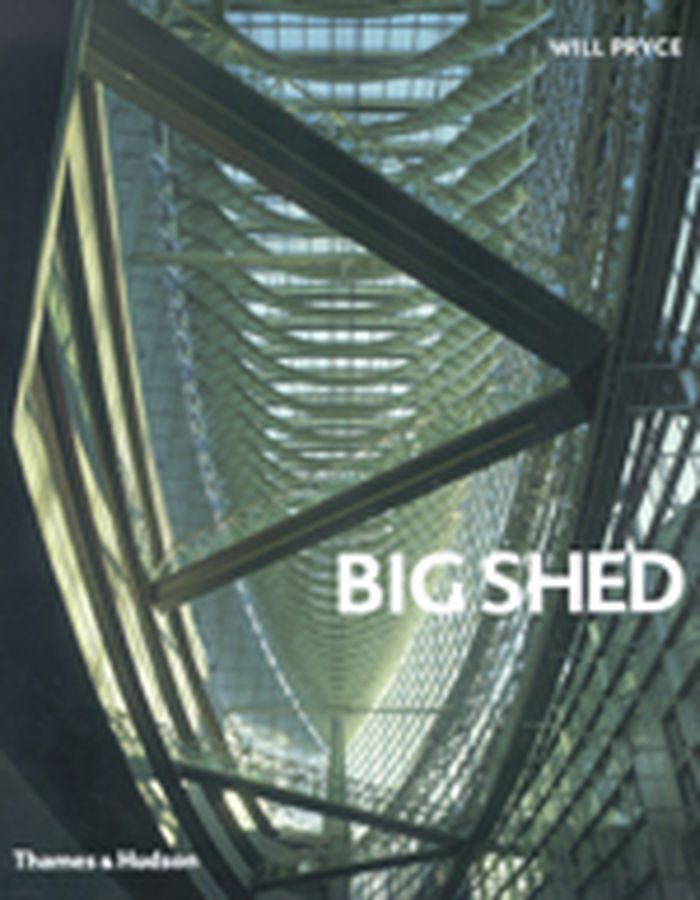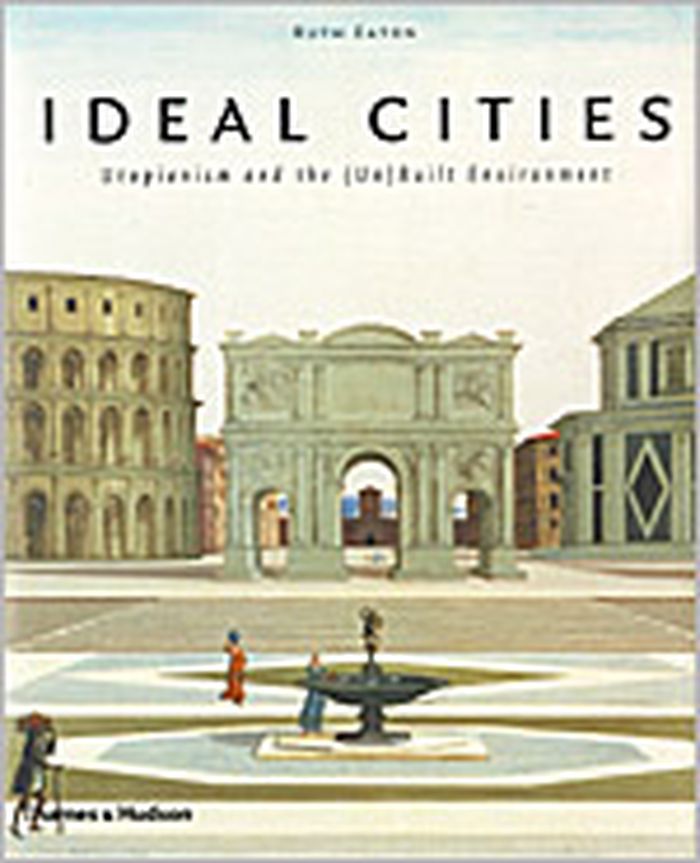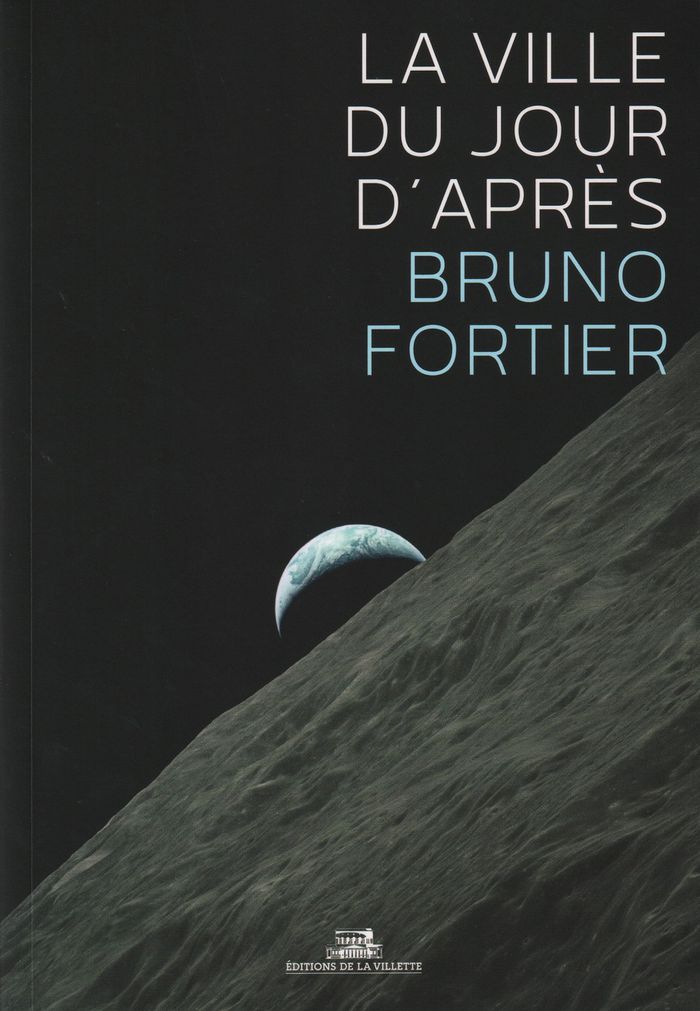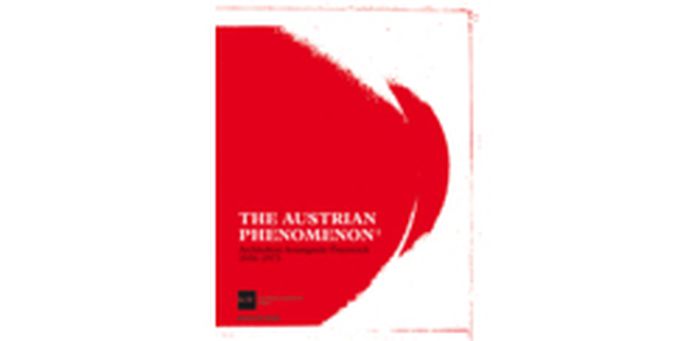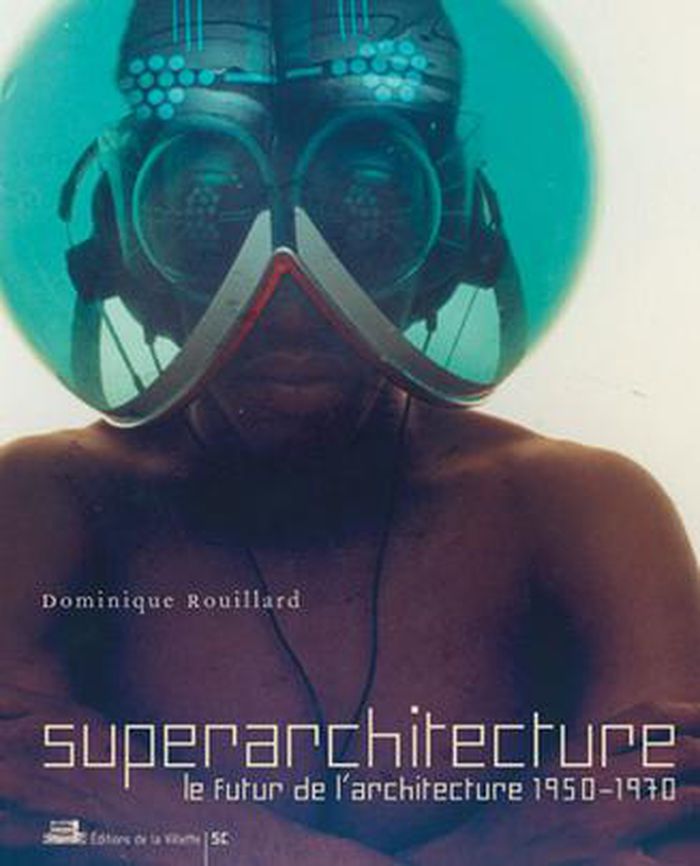$25.95
(available to order)
Summary:
In the late 1960s the world was faced with impending disaster: the height of the Cold War, the end of oil and the decline of great cities throughout the world. Out of this crisis came a new generation that hoped to build a better future, influenced by visions of geodesic domes, walking cities and a meaningful connection with nature. In this work of cultural history,(...)
Last futures: natures, technology and the end of architecture
Actions:
Price:
$25.95
(available to order)
Summary:
In the late 1960s the world was faced with impending disaster: the height of the Cold War, the end of oil and the decline of great cities throughout the world. Out of this crisis came a new generation that hoped to build a better future, influenced by visions of geodesic domes, walking cities and a meaningful connection with nature. In this work of cultural history, architect Douglas Murphy traces the lost archeology of the present day through the works of thinkers and designers such as Buckminster Fuller, the ecological pioneer Stewart Brand, the Archigram architects who envisioned the Plug-In City in the ’60s, as well as co-operatives in Vienna, communes in the Californian desert and protesters on the streets of Paris. In this mind-bending account of the last avant-garde, we see not just the source of our current problems but also some powerful alternative futures.
Architecture ecologies
$80.00
(available to order)
Summary:
During a tumultuous period in the 1960s and 70s, a new generation of architects began their careers amidst a period of profound social change, new conditions for architecture and the city and lasting changes to popular and critical forms of cultural production. First Works tells the story of this period and reassesses the conditions of architecture and the beginnings of(...)
December 2009
First works: emerging architectural experimentation of the 1960s and 1970s
Actions:
Price:
$80.00
(available to order)
Summary:
During a tumultuous period in the 1960s and 70s, a new generation of architects began their careers amidst a period of profound social change, new conditions for architecture and the city and lasting changes to popular and critical forms of cultural production. First Works tells the story of this period and reassesses the conditions of architecture and the beginnings of architectural careers through a selection of projects undertaken during the 60s and 70s. The book, accompanying a major travelling exhibition, presents a single key early project, in the form of models, sketches, photographs and drawings, by 20 young architectural practices, including Archigram, Aldo Rossi, Robert Venturi, Renzo Piano, Peter Eisenman, Herzog & de Meuron and Zaha Hadid. Alongside these ‘first works’, 20 invited critics, including Kenneth Frampton, Sylvia Lavin and Pier Vittorio Aureli, offer contemporary commentaries on these projects and their place within the architects’ subsequent careers.
$35.00
(available to order)
Summary:
In the late 1960s the world was faced with impending disaster: the height of the Cold War, the end of oil and the decline of great cities throughout the world. Out of this crisis came a new generation that hoped to build a better future, influenced by visions of geodesic domes, walking cities and a meaningful connection with nature. In this brilliant work of cultural(...)
October 2015
Last futures : nature, technology and the end of architecture
Actions:
Price:
$35.00
(available to order)
Summary:
In the late 1960s the world was faced with impending disaster: the height of the Cold War, the end of oil and the decline of great cities throughout the world. Out of this crisis came a new generation that hoped to build a better future, influenced by visions of geodesic domes, walking cities and a meaningful connection with nature. In this brilliant work of cultural history, architect Douglas Murphy traces the lost archeology of the present day through the works of thinkers and designers such as Buckminster Fuller, the ecological pioneer Stewart Brand, the Archigram architects who envisioned the Plug-In City in the ’60s, as well as co-operatives in Vienna, communes in the Californian desert and protesters on the streets of Paris. In this mind-bending account of the last avant-garde, we see not just the source of our current problems but also some powerful alternative futures.
$75.00
(available in store)
Summary:
Exhibition halls and sports arenas, factories and warehouses, airports and railway stations, arts centres and concert halls: big sheds are all around us yet the story behind their extraordinary growth has gone untold. Beginning with the roots of the big shed – including 19th-century iron structures, the work of Buckminster Fuller, Archigram, and the Pompidou and(...)
Big shed
Actions:
Price:
$75.00
(available in store)
Summary:
Exhibition halls and sports arenas, factories and warehouses, airports and railway stations, arts centres and concert halls: big sheds are all around us yet the story behind their extraordinary growth has gone untold. Beginning with the roots of the big shed – including 19th-century iron structures, the work of Buckminster Fuller, Archigram, and the Pompidou and Sainsbury Centres – the book is organized by function: exhibitions, industry, transport, sports and arts. Together these areas account for the best examples of big sheds over the past twenty years, and include work by Frank Gehry, Norman Foster, Richard Rogers, Jean Nouvel, Daniel Libeskind, Nicholas Grimshaw and Toyo Ito, among many others. From the vertiginous daring of Tokyo International Forum to Madrid’s award-winning Barajas Airport, these structures have changed the very nature of architecture. Throughout the book Pryce’s dramatic photography captures the buildings’ primal vastness, while technical drawings help explain how they were designed, built and function.
Commercial interiors, Building types
$90.00
(available to order)
Summary:
This vast panorama spans more than two millennia of Western attempts to invent the perfect city, cradle of the ideal society. Embracing not only architecture and town planning but also art, literature, philosophy, and politics, the book takes us through the imaginary environments of a wide variety of fascinating and often controversial movements and figures, including(...)
Ideal cities : utopianism and the (un)built environment
Actions:
Price:
$90.00
(available to order)
Summary:
This vast panorama spans more than two millennia of Western attempts to invent the perfect city, cradle of the ideal society. Embracing not only architecture and town planning but also art, literature, philosophy, and politics, the book takes us through the imaginary environments of a wide variety of fascinating and often controversial movements and figures, including Plato, Filarete, Leonardo da Vinci, Thomas More, Thomas Jefferson, Claude-Nicolas Ledoux, Charles Fourier, Etienne Cabet, Robert Owen, William Morris, Ebenezer Howard, Bruno Taut, Le Corbusier, Frank Lloyd Wright, the European Situationalists, the Japanese Metabolists, Archigram, Superstudio, and many more. The ideal cities in this richly illustrated book exist for the most part in the domain of ideas. Ruth Eaton explores the ability of ideal cities to stimulate reflection and change, and she suggests under what conditions they might continue to exercise their vital function in relation to the urban environment of the future. The book is generously illustrated with 300 imagess, 250 in colour.
Urban Theory
La ville du jour après
$39.95
(available to order)
Summary:
Florence imitant Manhattan, curieuse allégation de Claude Lévi-Strauss ! Et si cette intuition était à prendre sérieusement ? Tout simplement, elle décrit un seul et même cycle, tandis qu'une même granulométrie lie les édifices. Bref, des villes où les mille différences comptent infiniment moins que dans nos villes modernes devenues imprécises, chahutées et pour certaines(...)
La ville du jour après
Actions:
Price:
$39.95
(available to order)
Summary:
Florence imitant Manhattan, curieuse allégation de Claude Lévi-Strauss ! Et si cette intuition était à prendre sérieusement ? Tout simplement, elle décrit un seul et même cycle, tandis qu'une même granulométrie lie les édifices. Bref, des villes où les mille différences comptent infiniment moins que dans nos villes modernes devenues imprécises, chahutées et pour certaines insaisissables. Et pourtant, chacune d'elles - au XXe siècle comme auparavant - poursuit une idée, mais ne la laissant s'installer qu'au filtre d'une réalité parfois cruelle et qui se traduit toujours en dessins puis tracés. Comprendre le passage à cette différence radicale, en remonter les fils, c'est un peu l'histoire de ce livre. Pour saisir toutes les étapes de cette longue et inexorable évolution, l'auteur remonte jusqu'à la Renaissance et son berceau, l'Italie, pour traquer les mutations successives qui vont produire un tel chamboulement et faire de ces villes des métropoles. Le récit, de nature épique et au rythme enlevé, est accompagné de nombreuses reproductions de dessins de Léonard de Vinci, Perruzi, Piranèse, Boullée, Ruskin, Koolhaas, Portzamparc, Archigram et quelques rares photos prises par Coburn et Gursky.
Urban Theory
Austrian phenomenon
$140.00
(available to order)
Summary:
In the Austria of the 1960s, the visionary designs of architects and artists garnered international attention. Described as the "Austrian phenomenon," these projects and installations contained the concentrated creativity of the Austrian architectural neo-avant-garde between 1956 and 1973. In Vienna, these avant-garde dreams came to be symbolized by Hans Hollein’s Retti(...)
Austrian phenomenon
Actions:
Price:
$140.00
(available to order)
Summary:
In the Austria of the 1960s, the visionary designs of architects and artists garnered international attention. Described as the "Austrian phenomenon," these projects and installations contained the concentrated creativity of the Austrian architectural neo-avant-garde between 1956 and 1973. In Vienna, these avant-garde dreams came to be symbolized by Hans Hollein’s Retti Candle Shop and Hermann Czech’s many cafés and bars, which are still successful today, including the Kleines Café (Little Café), Wunderbar, and Salzamt. The best-known protagonists of this scene include Hans Hollein, Walter Pichler, Raimund Abraham, Coop Himmelblau, Haus-Rucker-Co, Missing Link, and others. The book consists of two parts. The first contains "Documentation" of important publications from the years 1958–1973 in international trade journals like Archigram, Domus, Architectural Record, and Casabella, in which the young architects sought attention for their programs. The second is "Reconstruction," a cross-section of images and texts from publications on the "Austrian phenomenon," elucidated and situated in the context of international architectural history by authors such as Friedrich Achleitner, Bart Lootsma, Stanislaus von Moos, Joseph Rykwert, Anthony Vidler, and others.
Architecture since 1900, Europe
$79.95
(available to order)
Summary:
La médiocrité esthétique et le fonctionnalisme primaire de la reconstruction post 1945 sécrète une crise durable qui affecte l’architecture et l’urbanisme dans l’ensemble du monde occidental. A la "Cité radieuse" des années 1930 succède, au milieu du siècle, une nouvelle utopie la "Mégastructure". Hybride colossal traversant des territoires sans frontières, elle règle du(...)
October 2004, Paris
Superarchitecture : le futur de l'architecture 1950-1970
Actions:
Price:
$79.95
(available to order)
Summary:
La médiocrité esthétique et le fonctionnalisme primaire de la reconstruction post 1945 sécrète une crise durable qui affecte l’architecture et l’urbanisme dans l’ensemble du monde occidental. A la "Cité radieuse" des années 1930 succède, au milieu du siècle, une nouvelle utopie la "Mégastructure". Hybride colossal traversant des territoires sans frontières, elle règle du même élan, et l’architecture, et l’urbanisme, et les infrastructures. Mais l’engouement pour ces grandes machines sensées résoudre les problèmes à l’échelle planétaire s’émousse durant les sixties. La "Mégastructure" cède le pas à l’"Architecture radicale", ce faisant on assiste au basculement d’une approche de l’architecture dont les références sont le besoin et la construction à une autre dont les références sont l’immédiateté et la consommation, les objets mobiles et le plaisir du corps. Cette transformation correspond au passage d’une architecture conçue en terme de progrès social et de bonheur humain, à une architecture de la révélation du monde existant. Première monographie exhaustive sur la période, Superarchitecture est abondamment illustrée à l’aide d’une iconographie originale issue des archives des Smithson, d’Hollein, de Fuller, Friedman, Archigram, Price, Archizoom, Superstudio, etc. De l’utopie critique qui se dégage des projets de ces acteurs et de la puissance évocatrice de leurs dessins, les architectes contemporains comme Koolhaas, Tschumi ou MRDV se sont fortement inspirés pour construire leur univers conceptuel.
